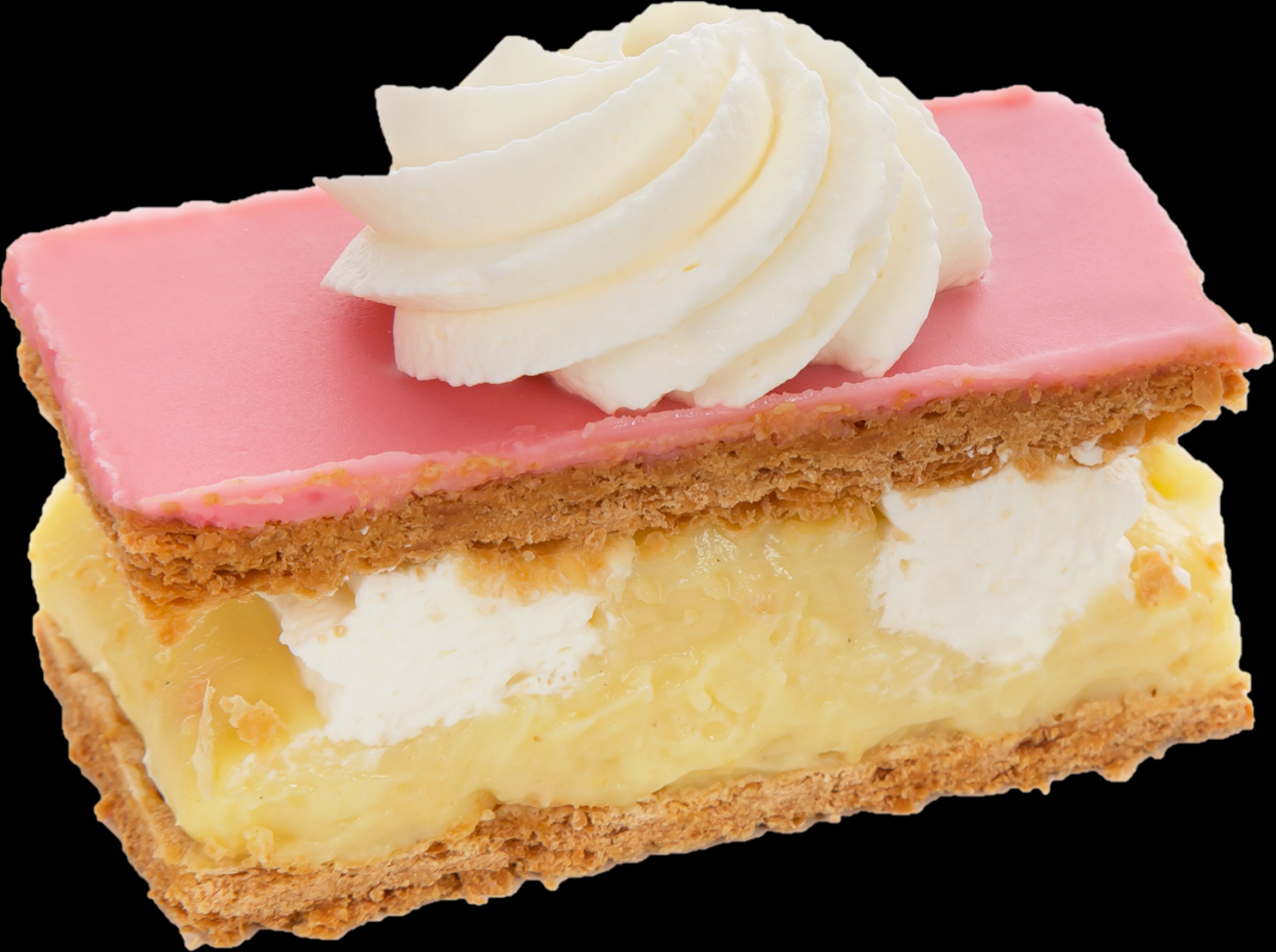
Indulge in the delectable world of tompouce, a pastry that has captivated taste buds across generations. With its rich history, tantalizing ingredients, and endless variations, tompouce has become a beloved treat enjoyed in many corners of the globe.
From its humble origins to its present-day popularity, tompouce has evolved into a culinary masterpiece that continues to delight and inspire.
Tompouce History
Tompouce, a delectable pastry with a rich history, originated in the Netherlands in the 18th century. It is believed to have been inspired by the French mille-feuille, a layered pastry filled with cream or jam. Over time, the tompouce evolved into a distinct Dutch delicacy, gaining immense popularity throughout the country and beyond.
In the Netherlands, tompouces hold a special place in the cultural landscape. They are often associated with festive occasions, such as birthdays, weddings, and national holidays. The pastry’s vibrant colors and sweet flavors make it a beloved treat among people of all ages.
Tompouce Ingredients and Preparation
Traditional tompouces are crafted with a combination of carefully selected ingredients. The base consists of a flaky puff pastry dough, which is baked until golden brown. The filling is typically made with a creamy custard or whipped cream, often flavored with vanilla or lemon.
The top layer is adorned with a vibrant pink fondant icing, which gives the tompouce its signature appearance.
The preparation process requires precision and attention to detail. The puff pastry dough is rolled out thinly and cut into rectangles. The custard filling is prepared by simmering milk, sugar, and cornstarch until thickened. Once cooled, the custard is spread evenly over the pastry base.
The top layer of fondant icing is then applied, completing the classic tompouce.
Tompouce Presentation and Variations
Tompouces are known for their distinctive presentation. They are typically rectangular in shape, with a height of around 5 centimeters. The top layer of fondant icing is usually bright pink, but other colors can be used for special occasions or variations.
Some tompouces are decorated with additional toppings, such as chocolate shavings or sprinkles.
Over the years, numerous variations of tompouce have emerged. Some popular variations include using different flavors for the filling, such as chocolate or fruit. The pastry dough can also be modified, such as using a chocolate-flavored dough or adding nuts or seeds for extra texture.
The fondant icing can also be replaced with other glazes or frostings.
Tompouce Taste and Texture
Tompouces offer a unique and delightful taste experience. The combination of flaky pastry, creamy filling, and sweet icing creates a harmonious balance of flavors and textures. The pastry is light and airy, providing a delicate contrast to the rich filling.
The filling is smooth and creamy, adding a velvety texture to the overall experience. The fondant icing adds a touch of sweetness and a vibrant visual appeal.
Different variations of tompouce offer distinct taste experiences. For example, chocolate-filled tompouces provide a richer and more decadent flavor, while fruit-filled tompouces offer a refreshing and fruity twist. The use of different glazes or frostings can also alter the overall taste profile, adding a touch of tanginess or extra sweetness.
Tompouce Cultural Significance
Tompouces hold cultural significance in various countries and regions. In the Netherlands, they are a beloved pastry that is often associated with celebrations and social gatherings. Tompouces are also popular in other parts of Europe, such as Belgium, France, and Germany.
In some countries, they are known by different names, such as “mille-feuille” in France or “Napoleon” in Germany.
Tompouces have become a symbol of Dutch culture and are often featured in traditional festivals and events. They are also a popular choice for birthday parties and other special occasions. The vibrant colors and sweet flavors of tompouces bring joy and festivity to any gathering.
Closing Summary

Whether enjoyed as a traditional treat or reimagined with modern twists, tompouce remains a timeless pastry that embodies the perfect balance of flavors and textures. Its cultural significance and global appeal are a testament to its enduring charm.
Essential Questionnaire
What is the origin of tompouce?
Tompouce is believed to have originated in the Netherlands in the 18th century, influenced by French pastry-making techniques.
What are the key ingredients in a tompouce?
Traditional tompouce consists of puff pastry, crème pâtissière filling, and pink icing.
What are some popular variations of tompouce?
Tompouce can be found with different fillings, such as chocolate, fruit, or whipped cream, and toppings, such as sprinkles or chocolate shavings.